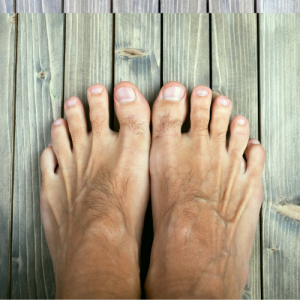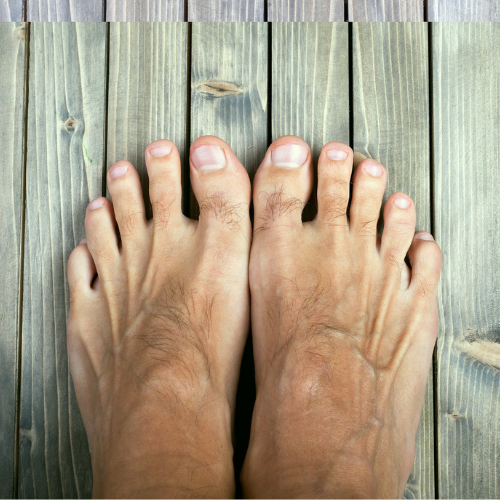Mastering Marathon Training
Training for a marathon is a monumental commitment that pushes the limits of your physical and mental endurance. Among the many challenges you’ll face on the road to race day, keeping your feet healthy is one of the most critical. Your feet bear the brunt of every mile you run, and without proper care, even minor issues can become major obstacles. This guide explores essential foot care strategies that can help you avoid injuries and stay on course toward completing your marathon.
The Impact of Marathon Training on Your Feet
Marathon training isn’t just about building stamina; it’s about preparing every part of your body, especially your feet, to handle the intense demands of long-distance running. Each step you take during training subjects your feet to repetitive stress, which can lead to a range of injuries if not managed effectively. By understanding these stresses and taking preventive action, you can keep your training on track and avoid setbacks that could hinder your progress.
Why Prioritizing Foot Health is Essential
Your feet are complex structures that play a vital role in supporting your body, absorbing impact, and maintaining balance as you run. Given their crucial function, any injury or imbalance can disrupt your training and compromise your marathon performance. By taking proactive steps to care for your feet, you can prevent injuries and ensure that your body is ready to meet the challenges of marathon running.
The Importance of Early Assessments
Before you begin your marathon training, it’s wise to schedule a visit with a podiatrist. A professional assessment of your foot structure and gait can identify potential issues before they become problematic. For example, conditions like flat feet or high arches can increase your risk of injury, but with the right advice and possibly custom orthotics, you can mitigate these risks from the start.
Choosing the Right Running Shoes
The foundation of foot care during marathon training starts with the right pair of running shoes. Your shoes need to offer the support, cushioning, and stability required to protect your feet over long distances. Not all shoes are created equal, so it’s essential to select a pair that matches your foot type and running style.
Visiting a specialty running store can make a big difference in finding the right shoes. Experts there can assess your gait and recommend shoes that provide the right balance of comfort and support. Remember, running shoes have a limited lifespan—typically around 300-500 miles—so be sure to replace them as they wear out to maintain optimal foot protection.
Don’t Forget About Socks
While shoes are a critical part of your gear, don’t overlook the importance of quality running socks. Synthetic socks designed for running help reduce friction and wick away moisture, which can prevent blisters and keep your feet dry and comfortable. Avoid cotton socks, as they retain moisture and increase the risk of skin problems.
Structuring Your Training Program Wisely
A well-designed training program is key to preparing for a marathon without overloading your feet. Gradual, consistent progress over several months helps build endurance while minimizing the risk of injury. Whether you follow an online program, join a local running club, or work with a coach, it’s important to focus on steady improvement rather than rapid gains.
Experienced runners and coaches can provide valuable insights into pacing, recovery, and injury prevention, helping you stay on track while reducing the likelihood of foot-related issues. Cross-training and strength exercises should also be integrated into your program to ensure a well-rounded approach to fitness.

The Role of Stretching and Cross-Training
Stretching is an essential part of any training regimen, especially for runners. Stretching both before and after runs helps to warm up your muscles, tendons, and ligaments, making them more flexible and less prone to injury. Focus on areas that are particularly stressed during running, such as your calves, Achilles tendons, and the plantar fascia.
Cross-training is another crucial element of injury prevention. By incorporating low-impact activities like swimming, cycling, or strength training into your routine, you give your feet a break from the repetitive pounding of running while still building endurance and strength. This approach helps reduce the risk of overuse injuries and keeps your training balanced.
The Importance of Listening to Your Body
Even with the best training plan, there will be days when your body doesn’t feel right. It’s important to listen to these signals and adjust your training accordingly. Ignoring pain or discomfort can lead to serious injuries that could derail your marathon goals.
If you experience persistent pain, consider taking a rest day or opting for a low-impact activity instead of running. Rest is a critical component of training, allowing your body
to recover and rebuild. If a podiatrist has recommended rest due to a specific issue, it’s crucial to follow their advice to ensure a safe and effective return to running.
Maintaining Good Foot Hygiene
Good foot hygiene is essential, especially when you’re spending hours in the same shoes during training. Sweat and moisture can create an environment where bacteria and fungi thrive, leading to infections that can interfere with your training.
Regularly check your feet for any signs of irritation, redness, or unusual odors. Pay close attention to areas between your toes and around your toenails, as these are common sites for infections. If you notice any concerning symptoms, seek medical attention promptly to address the issue before it worsens.
Recognizing and Addressing Warning Signs
As you train, it’s important to be vigilant about any warning signs that your feet might be in trouble. Pain, swelling, or changes in the skin or nails should not be ignored, as they can be early indicators of more serious conditions. Addressing these issues early on can prevent them from becoming major problems that could disrupt your training.
One of the most common mistakes runners make is dismissing pain or discomfort as something that will go away on its own. Unfortunately, continuing to run on an injured foot can exacerbate the problem, leading to more severe damage and a longer recovery time. By seeking professional advice and addressing issues promptly, you can stay on track and avoid unnecessary setbacks.
Common Foot Injuries in Marathon Training
Understanding the types of foot injuries that commonly affect marathon runners can help you take preventive measures to avoid them. Here are some of the most frequent foot injuries and how to manage them:
- Plantar Fasciitis and Heel Pain
Plantar fasciitis is one of the most common causes of heel pain in runners. It occurs when the band of tissue that connects the heel to the toes becomes
inflamed due to repetitive stress. Symptoms typically include sharp pain in the heel, especially after rest or first thing in the morning.
To prevent plantar fasciitis, ensure you’re wearing supportive shoes, stretch regularly, and avoid running on hard surfaces whenever possible. If you experience heel pain, address it early with rest, ice, and possibly orthotic inserts to reduce strain on the affected area.
- Stress Fractures
Stress fractures are small cracks in the bones caused by repetitive impact. They are particularly common in the metatarsals, the long bones leading to the toes. Symptoms include localized pain and swelling, which typically worsen with continued activity.
To reduce the risk of stress fractures, gradually increase your running distance and intensity. Cross-training and proper footwear also play a key role in prevention. If you suspect a stress fracture, it’s important to seek medical attention promptly, as continuing to run can lead to more severe injuries.
- Blisters
Blisters are a common issue for runners, caused by friction between the skin and the shoe or sock. While they might seem minor, blisters can become painful and even lead to infections if not managed properly.
Preventing blisters involves wearing shoes that fit well and socks that reduce friction. If you develop a blister, keep it clean and avoid popping it to prevent infection. If blisters become a recurring problem, consider having your gait and footwear assessed by a professional.
- Tendinitis
Tendinitis is the inflammation of a tendon, often resulting from overuse or improper warm-up and cool-down routines. The Achilles tendon is a common site for tendinitis in runners, but other tendons in the foot and ankle can also be affected.
Preventing tendinitis involves ensuring you warm up properly before runs, stretch thoroughly, and avoid sudden increases in training intensity. If you develop tendinitis, rest, ice, and stretching are key to recovery, and professional guidance may be necessary to prevent further injury.
Preparing for Race Day

As marathon day approaches, your focus should shift from building endurance to maintaining foot health and avoiding injury. Ensure your shoes and socks are in top condition, and continue to listen to your body’s signals. Proper rest and tapering are crucial in the final weeks leading up to the race, allowing your body to recover fully before the big day.
Conclusion: Achieving Your Marathon Goals with Healthy Feet
Marathon training is an extraordinary challenge that demands physical, mental, and emotional resilience. By prioritizing foot care and taking preventive measures, you can minimize the risk of injury and ensure that you’re ready to cross the finish line.
From choosing the right shoes and socks to structuring a balanced training program and listening to your body, every step you take toward protecting your feet is a step toward marathon success. With careful preparation, attention to detail, and a commitment to rest and recovery, you can achieve your marathon goals and enjoy the sense of accomplishment that comes with completing such a monumental feat. Happy running!
To help prepare for the Chicago Marathon, schedule an appointment with Dr. Rappette or Dr. Pandya! Offices located in Yorkville and Morris, call 630-553-9300 or 815-942-9050 to schedule an appointment.









